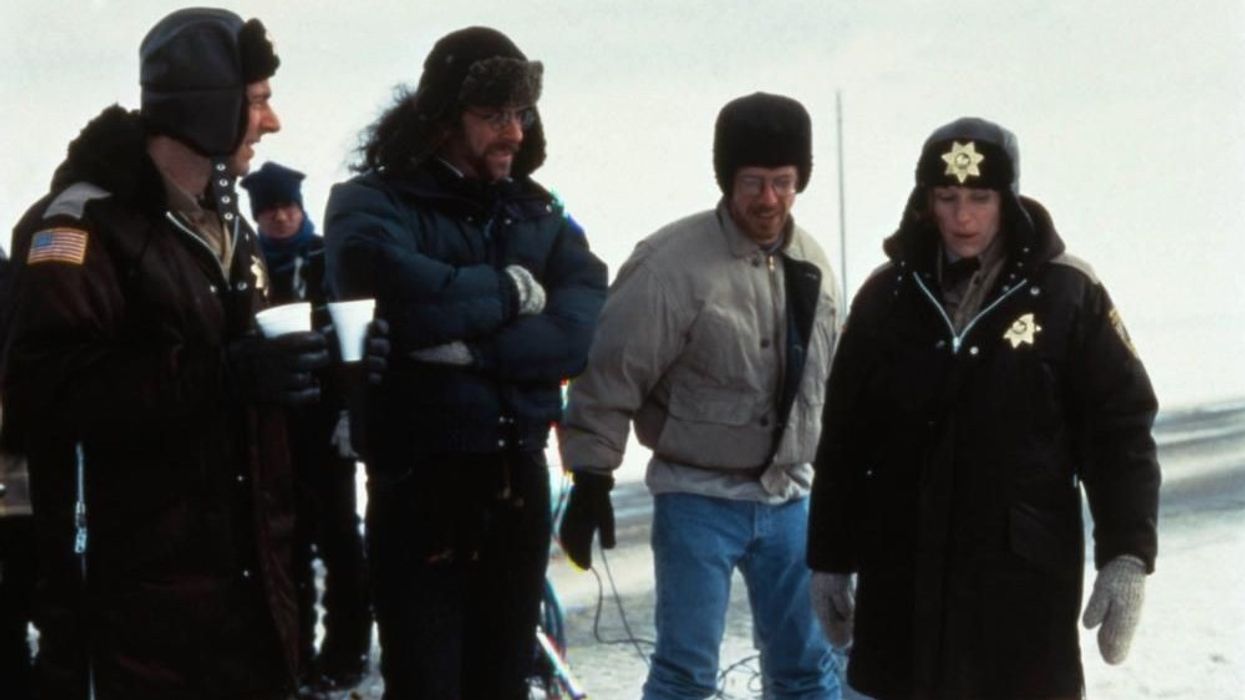The Directors and Stars of 'Fargo' Reflect on the Movie's 25th Anniversary
Twenty-five years later, and we're still thinking about that wood chipper.

It's hard to imagine a time before the Coen brothers were household names. At the time they made their crime classic Fargo,they had been making movies for over a decade. The Coens were stuck with mostly indie movies that did well with critics, but never really expanded beyond. They even had a few bombs. But when Fargo debuted at Cannes it took the Prix de la mise en scène (Best Director Award), and the film was nominated for the Palme d'Or.
When it hit theaters, the movie was also a hit, making $60,611,975 worldwide, off only a seven million dollar budget. It was nominated for seven Academy Awards, winning two for Frances McDormand and a screenwriting award for the Coens.
Fargo also became part of the cultural lexicon, putting the Minnesotan accent on the map and making everyone a little more scared of woodchippers, except Minnesotans, who embraced that item and still use it as the grand marshal of a parade held in Dillon.
Recently, the Coens, Frances McDormand, Steve Buscemi, and other Fargo talent and creators sat on a panel to talk about their experiences with making the movie. The panel was part of Tribeca's 2021 reunions series presented by Entertainment Weekly.
When talking about writing the script with Ethan, Joel Coen said he didn't really know where it would go.
"[It] would sort of reveal itself as we were working on the script," he said. In fact, at one point they set the script aside as they tried to figure out what needed to happen. It was put "in a drawer" and "It sat there for probably four or five months and we didn't think about it," Coen continued. "And then we came back and finished it."

Once the script was done, there was a lot more work to accomplish. Buscemi said he had heard about Fargo way back when they were making 1991's Barton Fink.
"He said, 'Your character is gonna be a very good-looking guy,'" Buscemi said, but of course when the movie came out, the running joke was that his character was "funny looking" in a "general kind of way."
But in some way, every character had to evolve while making the movie. Joel Coen said they also thought the character of Jerry would be someone "a little overweight and uncomfortable in his body, a little slovenly," but when Macy came in to read for it, their minds changed.
"We thought, you're right, you should play that part… that's a better version of what we'd dreamt up. He kind of, in a strange way, wrote the character for himself."
The performances in this movie are all special and interesting. The cast creates so many well-rounded characters who make you really care about where the story is going, and who all feel like the hero of their own journey.
But the real hero of the movie is the location. Fargo, North Dakota, and suburban Minneapolis shine on the screen. They became so incredible and immersive. As Frances McDormand said of the giant Paul Bunyon statue, "We finally realized that people were bringing their kids out before bed to see the statue. All these families would come and they park and all the kids would be in their pajamas and they just, they just sit in their car and look at the statue. That's how little there is to do in North Dakota."
Well, there was lots to do remembering this landmark movie and how it changed the landscape for the Coens. It rocketed everyone involved to stardom and set their career ablaze, allowing them to enter an incredible streak working with famous actors and telling stories across many different genres.
What are your memories and favorite parts of the movie? Let us know in the comments.













